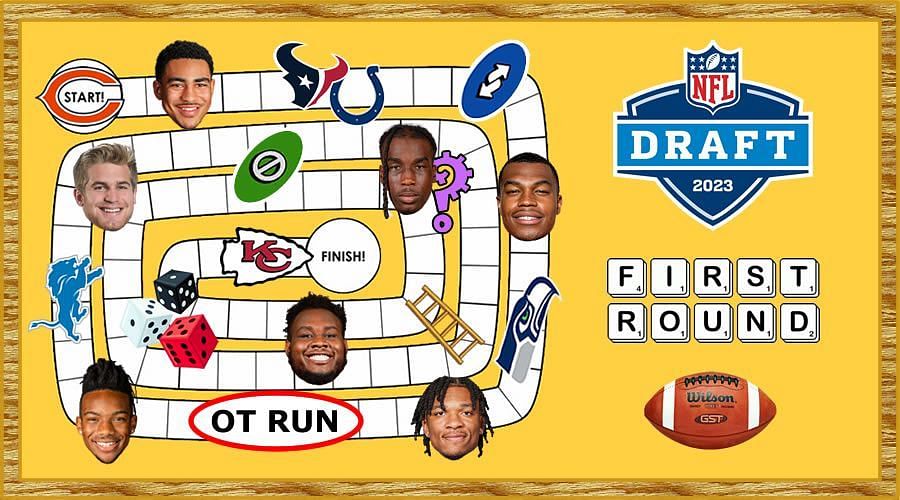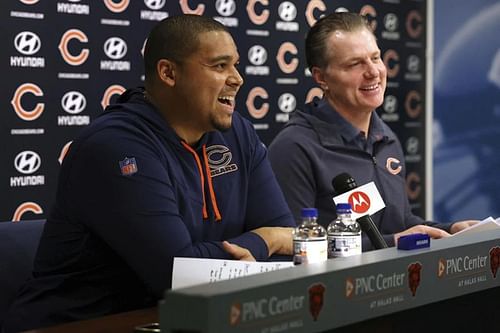
Mapping out the first round of the 2023 NFL Draft:
Originally, I didn’t intend on writing about anything football-related this week, since there’ll be a ton of discourse coming out of Indianapolis over the week, and I have a big recap of the scouting combine planned in video form next week.
However, as team personnel and media members get together and information is exchanged, I thought we should take a sober look at the NFL landscape before smokescreens are about to be put out there and people try to create different narratives, specifically as it pertains to the draft. Of course, there’ll be legit storylines coming out of this as well, but you can’t allow this new information to change your view too much here.
So, I decided to sort of create a blueprint for what I believe the first round may look like on April 27, based on having watched all the players on tape – without testing numbers influencing opinion – and understanding how different teams operate, what their needs currently are and how they may approach the offseason.
I’ll be walking you all through picks one to 31 (or 32, if you count Miami’s forfeited selection) and breaking them up into certain segments, which could alter what happens next.
Let’s start with …

The first pick:
There are three options here at the top for the Chicago Bears: either take the best player on their board, draft another quarterback and likely trade Justin Fields, or trade down with another team, in order to collect additional assets.
To me, with the development Fields showed in Year Two as a processor of information and more consistent accuracy, along with some of the spectacular plays he made – seemingly on a weekly basis – as a runner, I don’t know if there’s somebody in this class worthy of moving on from what you have, other than a very slim argument for having two extra years of contractual control if you reset the rookie QB clock.
I believe Georgia’s interior D-lineman, Jalen Carter, and Alabama edge defender Will Anderson Jr. are in a tier of their own in terms of truly elite non-quarterback prospects, but I don’t see how you turn down a haul from another team to swap spots, considering the tax that comes with making a move for a franchise signal-caller.
So the question really is: Who wants to get their guy? The four teams I’d identify in the top 10 – which I don’t see another real contender outside that range – are the Texans at No. 2, the Colts at No. 4, the Raiders at No. 7 and the Panthers at No. 9.
Unless you’re counting a pretty good two-plus-year stint or so with Derek Carr, who was released by the Raiders a couple of weeks ago, all of those franchises have been in quarterback hell for like five seasons now.
With a miraculous Week 18 win over Indy, Houston would now have to pay a premium, most likely, just to switch spots to where they could’ve easily been picking, and they’ll probably want to pair new coach DeMeco Ryans with a signal-caller of his choice.
Indy, of course, made things easier on themselves by staying close to the range for a top QB with the way their season ended, to take a different route than cycling through a bunch of limited veterans.
Las Vegas will at least be entering a “re-shaping” phase of its roster, but is in a pretty good position cap-wise (third-most cash available right now).
And, finally, the Panthers – after trading away Christian McCaffrey and people calling for wholesale changes midway through the 2022 season – came up a little short of beating the Bucs in Week 17 to put Tampa Bay in the driver’s seat for a default NFC South title. It would certainly be interesting to see what things look like, if you drop a rookie quarterback contract into that situation, with an otherwise pretty impressive collection of talent.
Question No. 2, of course, is who will be QB1 for these teams? And I think we’re about to see a lot of discourse coming out of Indy, especially once people see Florida’s Anthony Richardson launch 70-yard bombs against the air, but I’m still looking at Alabama’s Bryce Young being the pick, once it’s all said and done.